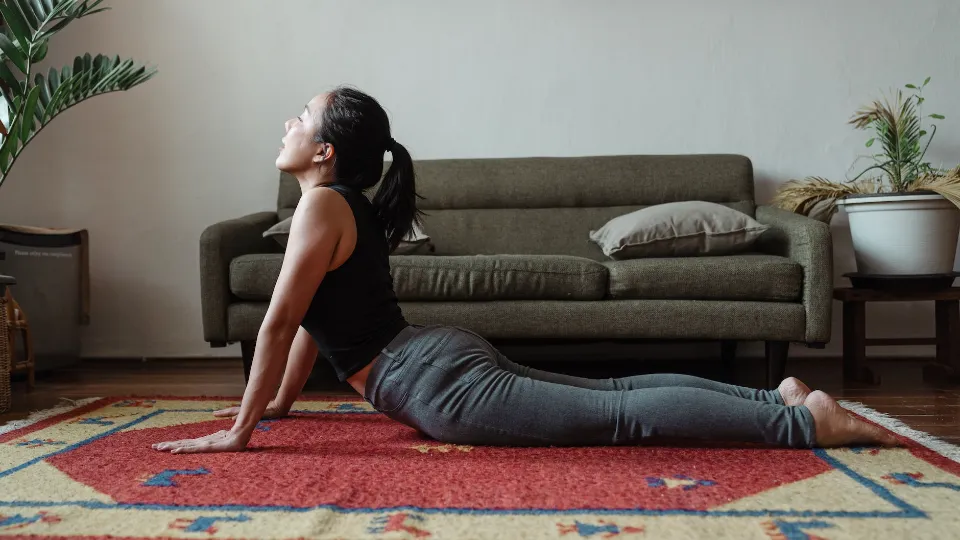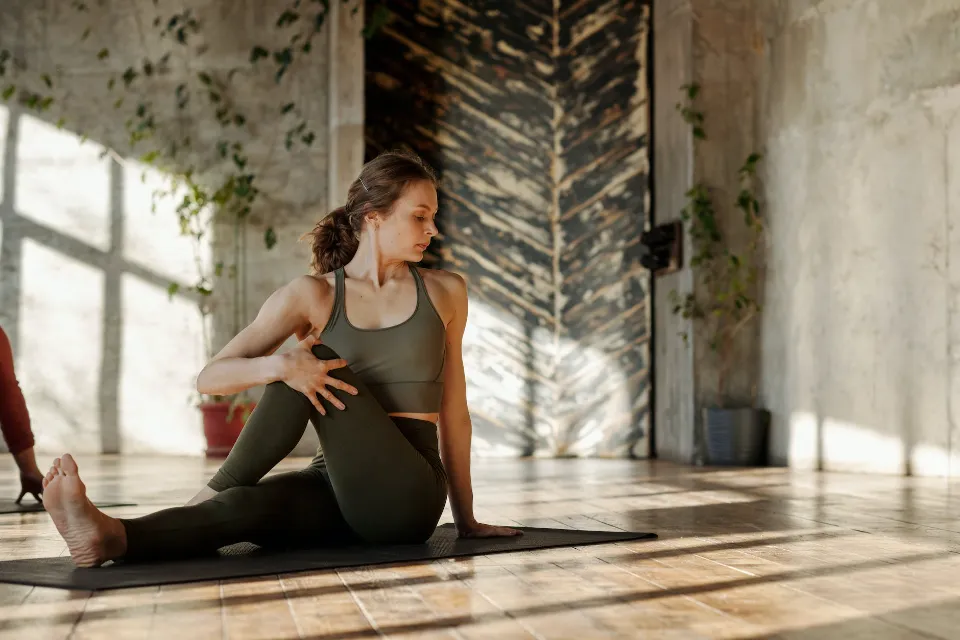It goes without saying that some people are more adaptable than others. Your level of flexibility may not seem all that significant to you depending on what you do throughout the day and the kinds of demands you place on your body. But the truth is that flexibility has an impact on everyone, even those who lead sedentary lives.
Flexibility training can help you become more fit for daily activities and improve your overall health and well-being. You may be able to greatly benefit from flexibility exercises if you frequently experience muscle fatigue, muscle stress, or poor joint health.
Here is what you need to know about flexibility and how to incorporate it into your daily activities.
What is Flexibility?
Your joints and muscles should be able to move freely within the confines of their functional range of motion without experiencing pain or restriction if you are flexible. Because of their soft, elastic joints and muscles, newborn babies have a high degree of flexibility. Daily movement patterns have an impact on how muscles, connective tissues, and joints develop and interact over time, and range of motion is gradually decreased.
Unbalances can result from underusing some body parts while overusing others, causing some tissues to become overly tight and others to become too lax. In addition to affecting movement efficiency and fluidity, imbalances can also lead to discomfort and instability. Unbalances can result in falls, joint issues, and back pain as we age.

It is significant to remember that increased flexibility isn’t always a good thing. In some cases, having too much flexibility can make you more prone to injury and reduce your functional performance. Your body will move smoothly and with stability when you are sitting, standing, or moving around if you have optimum flexibility and range of motion.
Benefits of Flexibility
Your health and wellbeing can be negatively impacted by a lack of flexibility in a number of ways. You might experience poor joint health, muscle strain, and fatigued muscles. You can avoid these issues and gain a number of advantages by improving your flexibility.
Enhanced Muscle Condition
Flexibility-enhancing exercises like foam rolling and dynamic stretching are one way to lessen injuries and enhance the health of your muscles. If you have contracted or tight muscles that don’t fully release, foam rolling can help you loosen them up.
The length of your muscle will return to its original and intended length when you roll it along its length. Your flexibility will eventually increase if your muscles are lengthened and not contracted.
Your muscles receive more blood when you stretch. Your muscles are better nourished and can get rid of waste products thanks to the improved circulation. Your recovery time may be sped up by improved circulation, especially after a strenuous workout. If you have suffered injuries like a pulled or strained muscle, this is especially crucial.
Dynamic stretching prior to your workout and foam rolling afterwards are two options. According to research, dynamic stretching increases muscle strength and reduces muscle stiffness.
Reduced Risk of Injury
Flexibility can lessen stiffness and back pain when combined with exercise. Flexibility enhances the range of motion for muscles, ligaments, and tendons, while aerobic exercise increases blood flow to soft tissues and muscles.9 When muscles and the supporting structures are well-nourished and mobile, injuries are less likely to occur.
According to research, stretching your back, hamstrings, and hip flexor muscles in particular may help you lower your risk of injury. Stretching can even help you in everyday activities like walking, bending, and reaching.9
Spending a few minutes gently, specifically stretching may be beneficial in the long run because stretching lengthens muscles and increases blood flow, which aids in recovery and healing.
Create a Greater Balance
Many people take balance for granted. In contrast, having good balance can help you move more quickly and efficiently on your feet and can enhance your athletic performance. It also is imperative as you age because it can help prevent injuries and falls.7
Enhancing balance and flexibility can also help to strengthen the core and increase stability. In one study, stretching and mobility exercises were given to a group of adults over 65 twice a week for a period of 12 weeks. They had better balance, which reduced their risk of falling. Participants also showed improved flexibility and lumbar strength.8
Factors That Influence Human Flexibility
There are fundamentally six key factors that determine your degree of flexibility:
- The innate structure of individual joints: Joint structure determines the range of motion of a joint. For instance, the hip and shoulder have a wide range of motion thanks to their ball-and-socket structure. The shoulder is the most flexible joint in the body when it isn’t restrained by overly tight muscles or connective tissue. The range of motion in hinge joints, like the elbow and knee, is much more constrained.
- Age and gender: Due to differences in bone structure and hormonal makeup, females typically have a more flexible natural state than males. Because of tissue deterioration, decreased activity levels, and other factors, humans tend to lose flexibility as they age.
- Connective tissue: Because they are less elastic than muscle tissue, fascia and tendons can reduce your flexibility. Connective tissues may become denser and less flexible over time if their water content is low and their collagen production is decreased.
- Lean muscle mass: The obstruction caused by large, bulky muscles reduces flexibility. Flexibility and muscle mass are frequently traded off in physically active people and athletes.
- Proprioceptors in the muscles and tendons: The muscles and tendons in your body contain tiny sensors called proprioceptors that record information about movement and force loads. While some proprioceptors, such as Golgi tendon organs, allow your muscles to stretch further, others, such as stretch inhibitors, cause your muscles to contract in response to excessive force. Each action serves as a safeguard against harm.
- Past injuries: Soft tissue injuries result in the accumulation of scar tissue, which can reduce the elasticity and hinder the flexibility of muscles. Myofascial trigger points, which are fibrous nodules that hurt and limit your range of motion, can also be brought on by injuries. Flexibility can also be hampered by injury to the bones and joints.

How to Improve Flexibility?
Here are seven ways to increase your flexibility if you’re ready to experience some of those advantages for yourself.
Pay Attention to Your Body
The first step in increasing your flexibility is to become aware of which parts of your body move easily and which ones don’t.
Many people are so disengaged from their bodies that they are unaware of their own limitations in terms of flexibility.
Not sure which areas require your attention? She advises focusing on the neck, shoulders, and hamstrings first because of how much sitting we do.
Do Each Day Stretching
The best thing about flexibility training is that you don’t need to put in countless hours of practice to see results; you just need to make the most of the time you have available and fit it into your schedule.
Six stretching poses make up this quick routine. This quick routine improves my circulation, flexibility, and outlook for the day while also boosting my mood.
Try stretching before bed or during your lunch break at work if you’re more of a night owl than an early bird.
Maintain Good Posture
By concentrating on posture correction, one of the best ways to increase flexibility is to stand up straighter.
Your muscles are in an unnatural position whenever you move with your head in front of your body and your shoulders rounded forward, such as when you are driving, sitting, texting, or using a computer. Barrett advises that you can fix it by simply sitting up straighter. Your shoulders should be stacked over your hips, and your ears should be stacked over them.
Add Flexibility Training in Your Workout
Adding modalities like foam rolling and stretching to your warm-up and cool-down periods, advises Martinez, is a simple way to increase flexibility if you already exercise regularly.
Barrett advises enrolling in a gentle yoga class in the meantime. “Even doing a class just once a week can be a game-changer,” she says.
Summary
If you spend a lot of time sitting at work, stretching several times a day can be helpful. If you experience persistent joint pain, frequent muscle soreness, or hyper-flexibility, speak with a healthcare professional. They can offer you a treatment plan and assist you in identifying the source of your discomfort.
FAQs
When is the Best Time to Do Flexibility Exercises?
Stretching exercises can be done whenever you like, but they are most effective right after a workout when your muscles are still warm. But if you warm up for at least five minutes prior, you can add a stretching routine at any time.
What is the Impact of Age on Flexibility?
Range of motion declines with age and gets progressively worse as you age. Exercise and stretching can slow the loss of range of motion.



